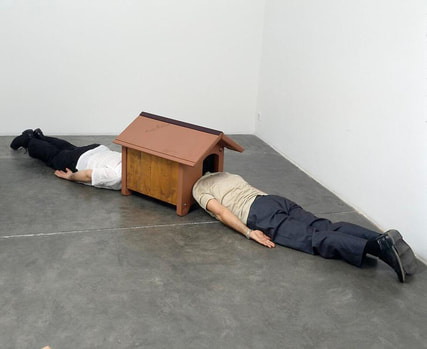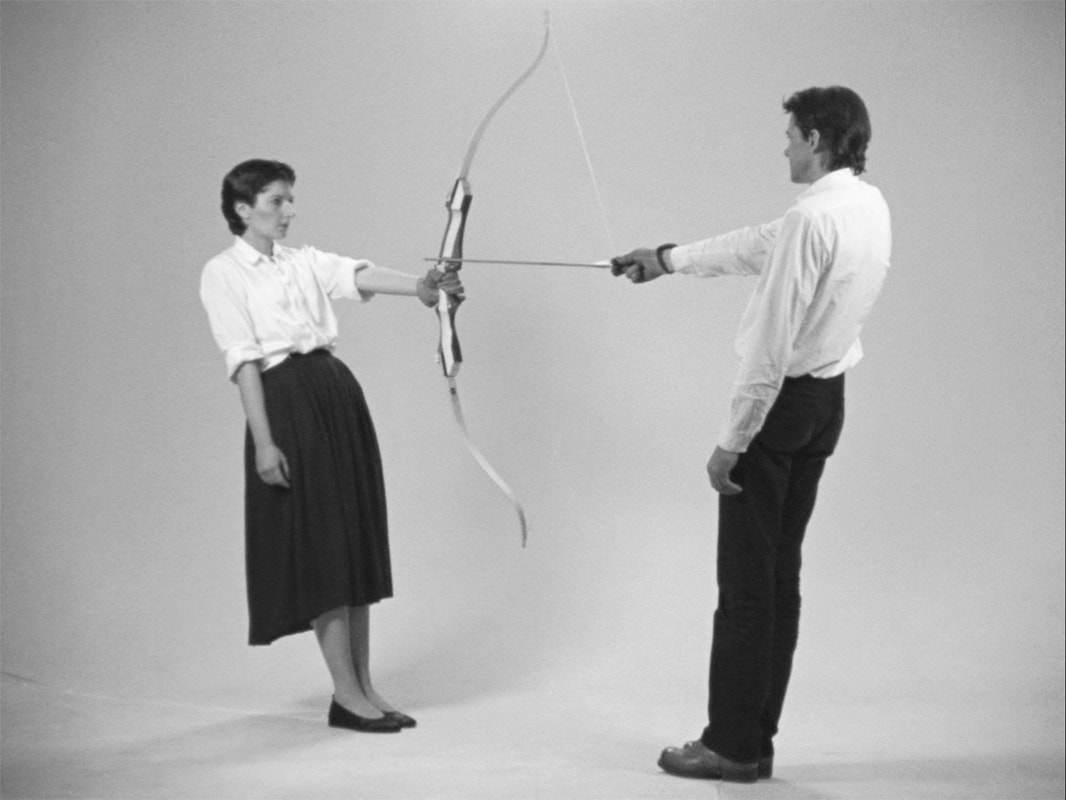Performance – Three Prompts and Movement
Students should note that this is a sample assignment. Instructors may alter its contents, and referring to the materials given directly by the instructor will always be the most accurate.
OBJECTIVES
- Become familiar with the artist and/or performers relationship with the audience.
- Become familiar with concepts of interactivity.
- Analyze how movement, sequence, duration, and energy dynamics can affect a time-based artwork.
THE ASSIGNMENT
The purpose of this assignment is to get familiarized with the medium of performance. Through the project, you will consider how movement, sequence, duration, and position of the audience, affects the outcome of the performed work.
To start this assignment, you will write down on separate slips of paper a prop, a location (somewhere accessible to the class), and the arrangement of the audience (i.e., in a circle, close to the performer, at a distance from a performer, on the ground, in chairs, through a window, interacting with performer etc.). Nothing dangerous please (like the bow and arrow above)!
You will put all three slips in different hats alongside your classmates. You will choose a random slip from each hat, and these will be the initial prompts for the live performance you will orchestrate for the class. Thus, the directions for the work come from your classmates. For the final piece, you want to consider the type of movements that you utilize when performing. Are the movements graceful, erratic, deliberate, or something completely different? How doe these movements and actions connect with the location, prop, and audience? The performance's success will hinder how you utilize these directives in original and impactful ways.
Here are the specific parameters.
The purpose of this assignment is to get familiarized with the medium of performance. Through the project, you will consider how movement, sequence, duration, and position of the audience, affects the outcome of the performed work.
To start this assignment, you will write down on separate slips of paper a prop, a location (somewhere accessible to the class), and the arrangement of the audience (i.e., in a circle, close to the performer, at a distance from a performer, on the ground, in chairs, through a window, interacting with performer etc.). Nothing dangerous please (like the bow and arrow above)!
You will put all three slips in different hats alongside your classmates. You will choose a random slip from each hat, and these will be the initial prompts for the live performance you will orchestrate for the class. Thus, the directions for the work come from your classmates. For the final piece, you want to consider the type of movements that you utilize when performing. Are the movements graceful, erratic, deliberate, or something completely different? How doe these movements and actions connect with the location, prop, and audience? The performance's success will hinder how you utilize these directives in original and impactful ways.
Here are the specific parameters.
- The performance needs to be between 2-5 minutes in length.
- You can use sound, video projection, and other props alongside the one chosen out the hat.
- The performance needs to include you, and you can include others in the class (if they are willing).
- You need to consider the duration, energy dynamics, and interactivity as related to 4D design principles.
VOCABULARY
- Movement
- Sequence
- Duration
- Energy Dynamics
- Interactivity


